
The battle over CAA is political, not legal
This is Part III of the series of articles. The the issues discussed are (a) whether the battle is legal or political and (b) how long it is likely to last
In Part I of the series of articles, I wrote about the changes made from to time in the citizenship law of India and the changing tones of some political parties.
https://www.devendranarain.com/citizenship-law-…right-about-turn/
Part II of the write-up analyses the real motive behind agitations against CAA, NPR and NRC.
(https://www.devendranarain.com/consequences-of-…ay-be-disastrous/)
Battle on the legal front
Let us first consider the legal battle over the CAA
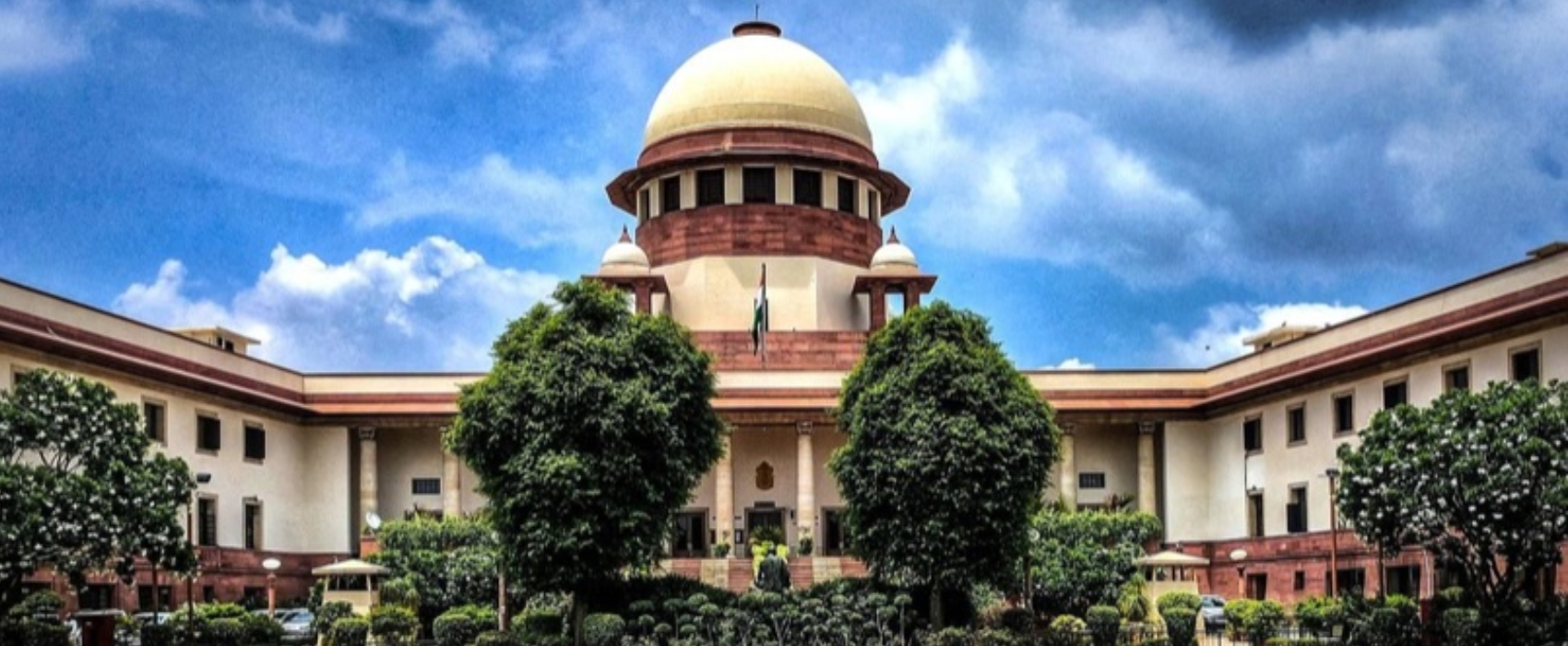
Supreme Court of India where legal battle is being fought
Out of 150 petitions filed in the Supreme Court over the CAA, 2019, 131 petitions have challenged the constitutional and legal validity of the Act. Their main argument is the Act violates Article 14 of the Constitution that guarantees “Right to Equality” because it arbitrarily favours members of only six communities from three countries while Ahmadis in Pakistan and Muslims in general in several countries are being persecuted because of their faith. The opponents of CAA are also angry that the Act has ignored Muslims (mainly from Bangladesh and Myanmar) illegally living in India because of their religion while it has facilitated grant of citizenship to about 19 lakh Hindus excluded from the NRC in Assam.
In my opinion, the opponents of CAA have a very weak case. No doubt, Article 14 of the Constitution (one of the Fundamental Rights in Part III of the Constitution) guarantees Equality before the law (“The state shall not deny to any person equality before the law or the equal protection of the laws within the territory of India.”). Article 13 guarantees that “The State shall not make any law which takes away or abridges the rights conferred by this Part and any law made in contravention with the provisions of this clause shall, to the extent of contravention, be void.”
The fundamental right to quality or equal protection of law is not absolute. In umpteen judgements, the Supreme Court of India and various High Courts have held that Article 14 does not forbid classification for the purpose of implementing the rights of equality guaranteed by it. The only condition is that ‘there must be a nexus between the basis of classification and the objects of the Act under consideration.’ [Supreme Court order in Motor General Traders v State of Andhra Pradesh; citation (1984) 1 SCC 222, 229 and 230.]
Fundamental right guaranteed by Article 14 to all persons living in India cannot be interpreted as a Fundamental Right of every person living in India to claim Indian citizenship. The Constitution made provisions about citizenship keeping in view the partition of the country and empowered the Parliament to make citizenship laws in future. As discussed in Part I, the first Citizenship Act made in 1955 was amended from time to time keeping in view the changing circumstances. It is the prerogative of the Parliament to decide who should be and who should not be or cannot be an Indian citizen. Of course, the law cannot be made in contravention of the Constitution and the Indian judiciary has the power to decide whether a law is ultra vires or not.
The Citizenship Act, 1955, provides mentions four types of citizenships:
- Citizenship by birth —It is granted to every person born in India (a) on or after the 26th day of January 1950, but before the 1st day of July 1987; ( b) on or after the 1st day of July 1987, but before the commencement of the Citizenship (Amendment) act of 2003 provided either of his parents was a citizen of India at the time of his birth; (c) on or after the commencement of the citizenship (Amendment) Act of 2003 where (i) both of his parents were citizens of India; or (ii) one of his parents was a citizen of India and the other was not an illegal migrant at the time of his birth.
- Citizenship by descent – It is granted to a person born outside India (a) on or after January 26, 1950, but before December 10, 1992, if his father was a citizen of India at the time of his birth; (b) on or after the summer 10, 1992 if either of his parents was a citizen of India at the time of his birth (subject to certain conditions).
- Citizenship by registration – Certain categories of persons, not being illegal migrants, and not a citizen under the Constitution or any provision of the Citizenship Act, can apply for citizenship on fulfilment of the prescribed conditions.
- Citizenship by naturalisation – Any other person, not being an illegal migrant, can apply for “the grant of a certificate of naturalisation”. If the government is satisfied that the applicant is qualified, it can grant a certificate to him.
From the summary of the provisions of the Citizenship Act, it is quite clear that illegal migrants or their children cannot claim citizenship by birth, descent, registration or naturalisation. Children of illegal migrants were granted citizenship (citizenship by birth) by the Citizenship ((Amendment) Act, 1986 provided they were born between January 26, 1950, and July 31, 1987. This amendment gave a one-time big relief to the children of Bangladeshis who had illegally entered India before July 31, 1987.
Those arguing or claiming that the CAA of 2019 violates the fundamental right to equality guaranteed by Article 14 have ignored and want the Supreme Court to ignore certain basic facts and legal provisions.
- None of those who have filed petitions in the Supreme Court are affected. If the NRC is an issue, the government has not yet decided when and when it will be prepared and the documents to be submitted. As of date, the fear, if any, is hypothetical.
- There is nothing in the CAA of 2019 that the court may declare a violation of Article 14. The classification is not arbitrary. The ancestors of the religious minorities of Pakistan and Bangladesh covered by the Act had every right to come to India after the partition of the subcontinent.
- When the persecuted minorities entered India, they did not hide their identity. They came as refugees seeking asylum because they were being persecuted (in the countries of their birth) on religious grounds and on arrival were exempted from the Foreigners Act, 1946 and the Passport (Entry into India) Act, 1920 so that they could stay.
- The refugees who came from Afghanistan are those who or whose ancestors had migrated to that country. For them, it is coming back to their home.
- The Muslims of Bangladesh and Myanmar (Rohingya Muslims) came and stayed illegally, hiding their identity from the authorities. They did not seek asylum. They were not exempted from the Foreigners Act, 1946 and the Passport (Entry into India) Act, 1920 so that they could stay. Under the Citizenship Act, 1955, as amended from time to time, they are not eligible to claim Indian citizenship.
- No court can direct the government to grant citizenship to illegal immigrants. Illegal entry in the country is a punishable offence.
- No court can order the government to make a law to grant citizenship to whosoever enters India, legally or illegally.
- On the citizenship issue, the court comes into picture only when an affected person or group of persons approaches the judiciary that despite fulfilling all the conditions, citizenship was denied to him or them.
- No court can or should order the government to make a law promising citizenship in advance to those who want to come to India because of religious persecution. Even the CAA of 2019 does not make any such promise. It grants citizenship only to those religious minorities who came to India by December 31, 2014. It does not promise citizenship to those who are still in Pakistan, Bangladesh or Afghanistan. Nor does it grant citizenship to those who came after that cut-off date.
- It is wrong to argue that the CAA of 2019 will grant citizenship to all the 12 lakh Hindus left out of the NRC (total 19 lakhs left out) in Assam. The Act lays down conditions that must be fulfilled to get citizenship. The court cannot and should not direct the government to relax the conditions.
- There are clear provisions for obtaining Indian citizenship on fulfilment of certain conditions. There is nothing in those conditions which could be considered a violation of the Constitution.
For all the reasons mentioned above, I hope, all the 131 petitions challenging the legal validity of the CAA of 2019 would be dismissed.
Political battle
The violent phase of protests against CAA, NPR and NRC is over. Now, in different parts of the country, the protesters are organising rallies, taking out processions and sitting on dharnas (ways of showing disagreement with something by refusing to vacate a place).
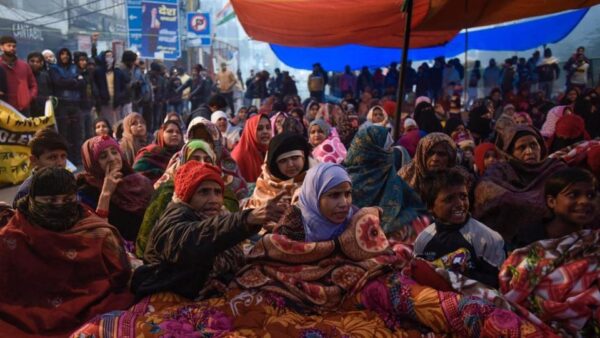
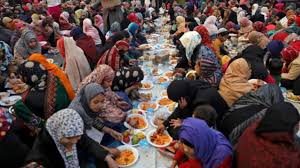
Protesting women and children are having picnic funded by PFI and RFI
The gathering of Muslim women and children in Shaheen Bagh, Delhi is an example of the latest form of protests. Muslim leaders are using women and children because they know that notwithstanding court order to the police to remove them, police will never use force against them. Today (January 28, 2020) is the 45th day of dharana. To show that they are patriotic, some of them show national flags to the media. However, they are unable to conceal their real character. “Pakistan Zindabad” (Long live Pakistan) like slogans can be heard. Young children are getting lessons in anti-national activities. Politicians who have been inciting Muslims to protest against CAA go there to address them and encourage them. These politicians are competing with each other to support and incite Muslims, thinking that it will increase their vote bank. There may be immediate gain but sooner or later, these Muslim voters will turn bhashmasur (a mythological character who got a blessing from Lord Shiva that whomsoever he touched would be reduced to ashes; to test whether he had achieved that power, he tried to test it on Lord Shiva himself; with great difficulty, Lord Vishnu saved Lord Shiva). By that time it would be too late.
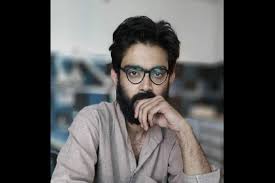

Sarjeel and his brother arrested from Jahanabad in Bihar, India
People had been wondering, who could be behind the Shaheen Bagh protests? Who is meeting the costs of food and other necessities? Now, it appears the mastermind behind the dharna is a JNU student and a very dangerous anti-national person, Sarjeel Imam. The news of efforts to organise Shaheen Bagh type protests is coming from other parts of the country also.
In a video, Sarjeel Imam is seen instigating Indian Muslims to cut off the “neck” (a narrow strip of land) that connects India to Assam and the north-east. In the video, he is saying “If 5 lakhs Muslims are organised then we can cut the North-east from rest of India. If we cannot do permanently, at least we can cut North-east from India for months”. Further, he is saying “Our responsibility is to cut the Assam from India then Govt will hear our voice. If we have to help the Assam then we will have to cut the Assam from rest of India”.
He has also threatened that besides regular protest rallies, more than 20-25 Shaheen Bagh type dharnas will also be organised in different parts of the country
Sarjeel Imam is as dangerous as the Owaisi brothers. After police of several estates filed cases against him for alleged sedition, he had gone into hiding. Today, January 28, he was arrested from a place in Bihar. Owaisi brothers are still free to work on their anti-national agenda.
The Enforcement Directorate (ED) has made a sensational disclosure about funds collected for organising protests and the beneficiaries. (https://news.webindia123.com/news/articles/India/20200127/3496212.html)
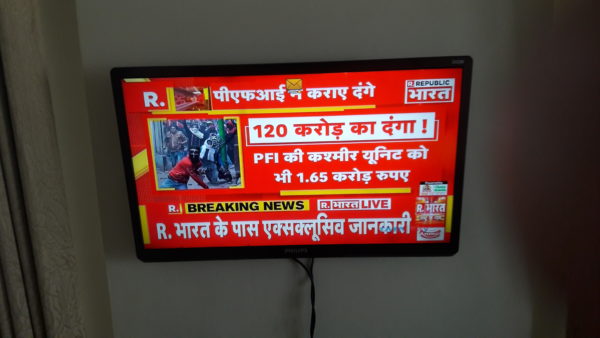
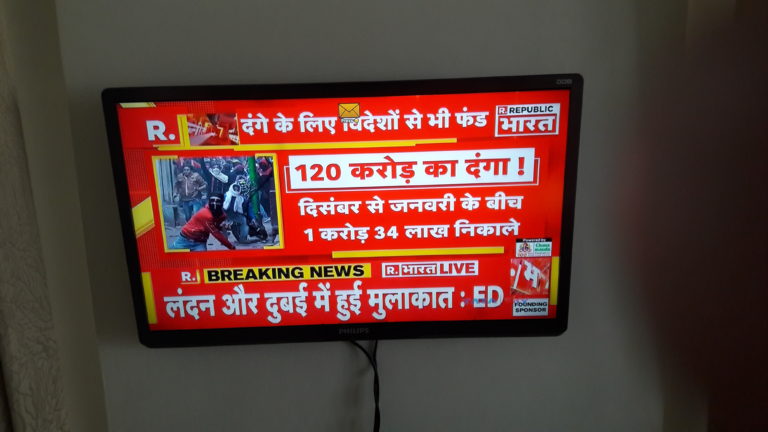
The ED claims that for the last two months, it had been keeping a tab on the 27 bank accounts of Popular Front of India (PFI), nine bank accounts of Rehab Foundation of India (RFI), 37 individuals and entities in 17 different banks.” During the probe, the ED found that in the PFI’s syndicate bank account maintained in New Delhi and several towns of Uttar Pradesh, “deposit of Rs 41.5 crore was made. About Rs. 27 crore was deposited through cash payments in 27 bank accounts.” Further, while keeping a tab on the PFI, the ED “identified 73 bank accounts. And following the money trail of the funding we came to know about RFI, which has funded over Rs 120 crore for the anti-CAA and anti-NRC protests.” Deposits were made in cash or through NEFT or RTGS or IMPS mode and withdrawn within two or three days, leaving only minimal balance. It is learnt that the funds came from some Muslim countries as well as from several individuals/organisations of Uttar Pradesh.
The ED has alleged that the beneficiaries included Congress leader Kapil Sibal (Rs 77 lakh) senior advocate s Indira Jaising (Rs 4 lakh ) and Dushyant Dav (Rs 11 lakh) and a person named Abdul Samad (Rs 3.10 lakh).
To counter the rallies against CAA, supporters of the BJP are also organising rallies. However, the counter has not been as effective as the protests.
How long the battle is likely to last
Going by the past experience, an early verdict of the supreme court is unlikely.
More serious is the possibility that the court order will not enter the battle. If those challenging the CAA of 2019 lose the legal battle, they will continue their political battle, most likely more fiercely. If they win, aggressive elements among the Hindus may launch their own political protests.
Those against the CAA have a vested interest in continuing the battle. The political parties anxious to overthrow BJP in 2024 general election will like the protests to continue till then. Those fighting for the grant of citizenship to the Muslims already living illegally in India and also to those who want to come, are unlikely to accept defeat.
One may argue, at least for the sake of argument, that no political movement can last for a very long time. They may cite examples of protests against Gujarat riots in 2002, demolition of Babri Masjid, the abolition of Article 370 and abolition of triple talaq. But one should also note that from time to time, these issues are raised to incite Muslims. The stakes now are much higher. As stated in Part II, their ultimate goal is to increase the Muslim population and change the demography of certain parts of India so that they can demand another “Homeland” for Muslims.
Those against the CAA seem to have made preparations for a long-term political battle. They have mobilised enough “arms and ammunition” in the form of money power, muscle power and firepower. In today’s Indian political battle, money is the most powerful weapon. Despite the fact that Arvind Kejriwal is openly supporting anti-national forces, large number of Delhi voters are favourably inclined to him for a few hundred rupees they save every month on consumption of electricity and water; women free bus-ride and elderly citizens get free visits to pilgrims.
The agitators are able to mobilise huge amounts of money needed to keep their protests going on. Our investigating agencies come to know after they have collected and disbursed crores of rupees. We have just seen that by the time the ED could lay hand on the members of the PFI and RFI, they had collected and disbursed crores of rupees. Such organisations may emerge with new names and addresses and collect money before they are caught.
Every political agitation, whether peaceful or violent, throws new leaders, rather families of leaders. Most of these leaders claim to be torchbearers of revolution for a new India but become most selfish politicians, anxious to establish their political fiefdom. The movement led by Ramanath Lohia against the oppression of backward classes produced Mulayam Singh Yadav who established his family rule in Uttar Pradesh. Kanshi Ram started the movement against the oppression of Dalits that produced Mayawati. The JP movement against Indira Gandhi produced Lalu Prasad dynasty. The Anna Hazare movement against corruption produced Arvind Kejriwal.
The agitation against CAA of 2019 has produced firebrand anti-national Sarjeel Imam who wants to be the sole leader of Muslims. His brother has also appeared on the stage. (Owaisi brothers must be feeling upset to see their competitors.)
Though Imams brothers have been arrested on allegation of sedition, I would not be surprised if new leaders like them come forward to fill the vacuum.
The “Axis Powers” (defined in Part II https://www.devendranarain.com/citizenship-law-…right-about-turn/) have become bold because they know that that the Modi government will not use ‘atom bomb’ (will not take drastic action) against the use of all their ‘arms and ammunition’ (money power, muscle power and fire power).
In such an atmosphere, the agitations are unlikely to end in foreseeable future.
To conclude, the Supreme Court is unlikely to satisfy the agitators. With vast manpower, enormous fund and emerging leaders, they may continue their anti-national activities. We are passing through a period of continuous agitations on some pretext or the other – demolition of Babri Masjid, abolition of triple talaq, abolition of Article 370 and now the CAA – to de-stabilise India.
Devendra Narain
January 28, 2019
PS
In Part IV, I raised and tried to answer a question: Why protests against CAA, NPR and NRC now? Why not earlier? https://www.devendranarain.com/why-protests-aga…-npr-and-nrc-now/
Part V – Lawmakers and bureaucrats messed up citizenship-related issues – questions the wisdom of the lawmakers of the ruling NDA who unnecessarily amended the Citizenship Act in 1949 and did not change the wordings of the Amendment At in 2019 to take the steam out of the protests. https://www.devendranarain.com/lawmakers-and-bu…p-related-issues/
Part VI is about how conspirators to intellectuals have made common cause against NPR
https://www.devendranarain.com/conspirators-to-…ause-against-npr/










Leave a Reply